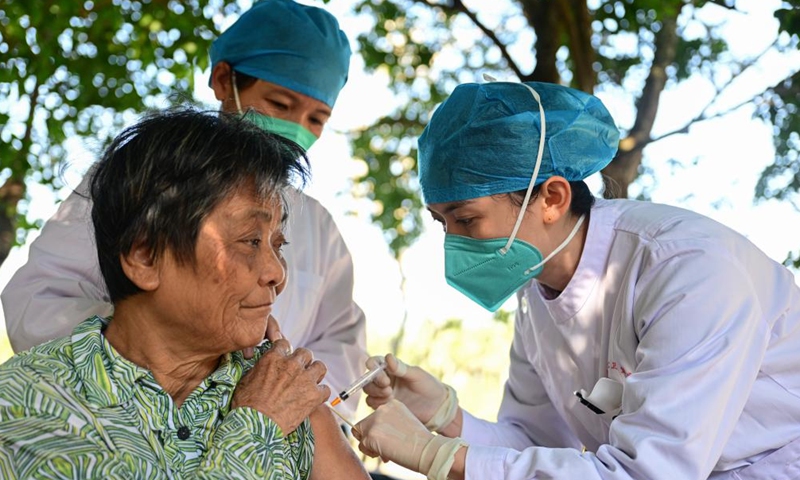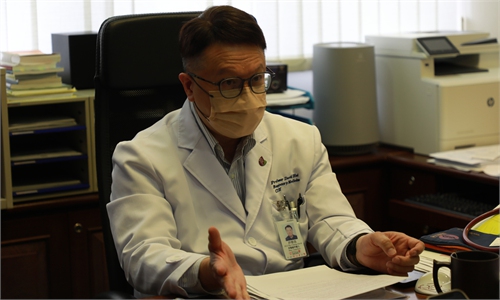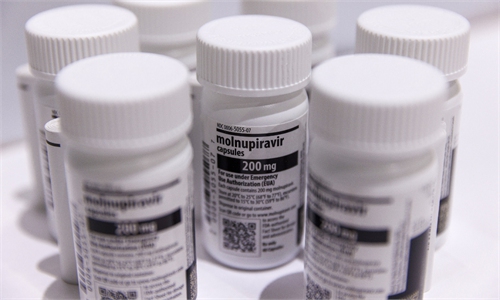China revises treatment guideline for critical COVID patients, reflecting 'people first, life first' principle

A medical worker administers a dose of COVID-19 vaccine to a senior resident in Hufeng Village of Wenchang, south China's Hainan Province, Dec. 22, 2022.The door-to-door services have been offered to help the elderly get COVID-19 vaccinations in the city of Wenchang. (Xinhua)
China on Friday released the fourth edition of its guidelines for treatment of COVID critical patients, which stipulated that a patient, whether or not meeting critically ill threshold, will be designated as critical if he or she is aged above 65, not fully vaccinated, and has severe underlying conditions.
The move is in line with China's revised COVID-19 response strategy, which shifted focus from infection prevention to health preservation and prevention of severe cases, experts said, believing that the new guideline could instruct many frontline medics to save more lives and enable the country to minimize the impact of the strategy change.
The revised fourth edition of the treatment guidebook for critical patients was released by the National Health Commission on its website. The revision took into consideration the new traits of the Omicron variants and patients' symptoms, and was based on clinical treatment experience.
The name of the disease has also been changed from novel coronavirus pneumonia to novel coronavirus infection.
The new guidebook stipulated upgraded care for the critically ill patients, requiring their health indicators to be monitored, especially the oxygen saturation of fingers during rest and after exercise.
Low oxygen saturation can raise the alert that a patient is critical, the guidebook read, noting that attention should be paid to saturation lower than 94 percent after light exercise in order to avoid aggravation of the patient's situation.
Wang Peiyu, deputy head of Peking University's School of Public Health, told the Global Times on Friday that the elderly and other high-risk groups are more likely to develop into critical patients in a short time. Upgrading their management means clear guidance to giving them small molecule drugs and using respirators early.
According to NHC, the new guidebook included some effective clinical methods, adding treatment for fever and coughs in the anti-symptom therapy, China-approved small molecule medicines in anti-viral therapy and anticoagulant therapy, meaning critical patients should be given heparin if there are no contraindications.
The guidebook also specified better ways to carry out oxygen treatment and provided more instructions on the use of traditional Chinese medicine in clinical practice.
Analysts stressed the Friday move shows China's COVID response is always "people first, life first" while also being dynamic in terms of making adjustments in accordance with the realities of the situation.
The virulence of the prevalent Omicron variants has largely dropped compared to the original virus or the Delta variants. Higher vaccination rates and a better-coordinated hierarchical medical system have also allowed China to make recent adjustments and distribute more resources to high-risk groups and those in need.
Since the strategy shift in December 2022, the country's top COVID response coordination unit and the NHC have been holding press conferences and releasing documents frequently to update the public on the epidemic situation, providing advice for personal protection and assigning detailed work for subordinate authorities, including the most recent ones for rural areas and the Spring Festival travel rush.


